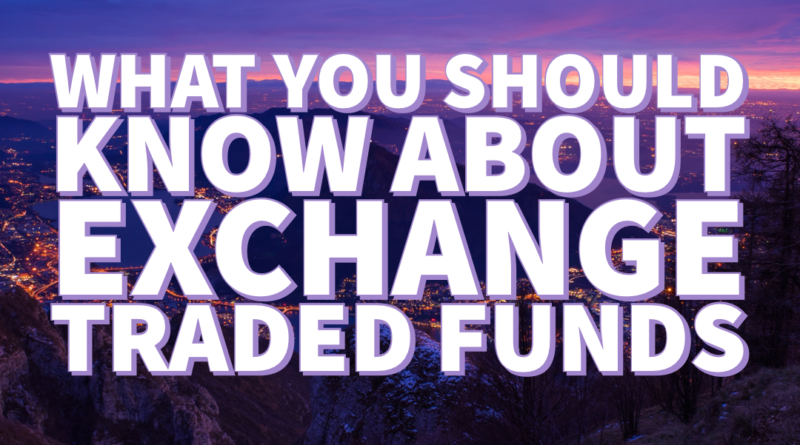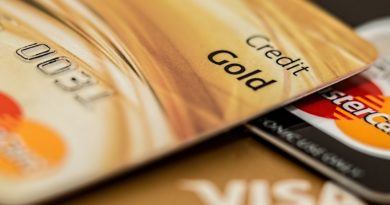What You Should Know About Exchange Traded Funds
Exchange Traded Funds were created about 25 years to be used as a simplified way to gain exposure to an entire index or sector. Investors have found them efficient in investment strategies like core and satellite or sector rotation. The security is an easy way to get exposure asset classes that have a lower representation in an allocation model. ETFs have expanded from their original model, which was to mimic a broadly used index like the S&P 500.
A market index is a list of securities in a certain segment of the market. Popular indices in the U.S. are the Dow Jones Industrial Average which is 30 large cap stocks that are indicative of the general direction of the economy, the S&P 500 which is 500 large cap stocks, NASDAQ Composite representing the majority of NASDAQ listed stocks and the Bloomberg Barclays US Aggregate Total Return Bond Index, an indicator of the U.S. general bond market. The various Index Committees reconstitute each index annually making sure it remains a fair representation of its theme.

There are several indices representing segments of the market like commodities, foreign markets, broad markets, small cap and so on. Investors cannot invest in an index, but can gain exposure to a market segment by search out a corresponding ETF. Much simpler than buying all the securities individually. In the U.S. investors can achieve exposure to about 80% of total market cap with an ETF that models the S&P 500. 1, 2
In the past five years investments in exchange traded funds have increased exponentially, now reaching $4 Trillion in assets.3 ETFs are structured to hold the same securities as the index which they emulate. Changes are made to the portfolio as the Index Committees make changes to their index. ETFs are sponsored by investment management companies and are not always connected to the sponsor of the index.
The Securities and Exchange Commission definition: “Like mutual funds, ETFs are SEC-registered investment companies that offer investors a way to pool their money in a fund that makes investments in stocks, bonds, other assets or some combination of these investments and, in return, receive an interest in that investment pool. Unlike mutual funds, however, ETFs do not sell individual shares directly to, or redeem their individual shares directly from, retail investors. Instead, ETF shares are traded throughout the day on national stock exchanges and at market prices that may or may not be the same as the NAV of the shares.” 4
Simplification
Exchange Traded Funds simplify the investment process and are well suited for new investors, a passive approach or those who don’t want to sit in front of their computer screen all day researching, monitoring and trading. Some brokerage firms and RIAs even have constructed portfolios that match to an investor’s risk tolerance, goals and time horizon. With an ETF the worst you’ll do is average. On the other side, the best that you’ll do is average.
Asset Allocation
Research shows asset allocation to be a greater contributor to portfolio growth than market timing. ETFs can be used effectively to gain exposure to an entire sector or market cap more efficiently than a handful of individual securities. ETFs make diversification and asset allocation simple. Just keep in mind that you get the entire sector. Not all stocks in the index will be superstars. What you will get is exactly what an index is, the average.
ETFs go beyond just stocks and bonds. In his paper “Portfolio Selection” Harry Markowitz showed that non-correlated assets like commodities for example, reduced volatility of a portfolio. He won the Nobel Prize in Economics for his work.
IAU and SLV are examples of precious metals ETFs that aid in providing commodity diversification. Shares of these represent actual gold and silver hard assets held in vaults. My favorite in the metals group is CPER. Copper is an industrial metal and so important in an economy that it is often referred to as Dr. Copper, meaning it has a PhD in economic forecasting.
Lower Cost
Mutual funds, private money management and ETFs all have an annual expense ratio, the fee charged by the investment management company. With ETFs the fee is usually lower than that of actively managed portfolios. The average expense ratio of an equity mutual fund was 0.52% in 2019. By comparison, the expense ratio of an equity index ETF was 0.18%.5 Some large cap equity ETF’s charge as low as 0.04%. Fees vary by sponsor for an ETF representing the same index, sometime 2-3X.

Investment Strategies
In implementation of a strategy, you may find ETFs a simplified solution to gain exposure to industry specific sectors as designated by GICS, Global Industry Classification Standard; Consumer Discretionary, Consumer Staples, Energy, Financials, Health Care, Industrials, Information Technology, Materials, Telecommunication Services and Utilities. 6
A sector rotation investment strategy, for example, attempts to exploit changes in economic conditions to find the best sector in which to invest for each phase of the economic cycle, the four segments being; full recession, early recovery, late recovery and early recession. ETFs modeled after sector indices can fill out the strategy efficiently. Historically, Consumer Discretionary has traded at a discount during full recession. Few people will buy the newest model television when they have concerns of potential layoffs at works. Buying shares when they are out of favor means that you get a lower price.
ETFs work well with Core and Satellite. An S&P 500 Index based ETF as a core would give the broad market exposure of large cap mature stocks needed to set up satellites like higher volatile positions like ETFs that invest in developing countries, small cap, tech sector or specialized medicine. I’ll cover more on these in a later blog. Subscribe at the top of the home page if you haven’t already.
Ad: Settle an estate or trust with this all-in-one Executor’s Guide.
More Than Just Equities
ETFs cover most types of securities including bonds and commodities. Bonds usually trade inverse to stocks giving balance to a portfolio. Commodities serve as a hedge to inflation.
There are funds based on several commodities indices. The three most popular indices are Continuous Commodity Index (CCI) which initiated in 1957 as the CRB Index, Dow Jones UBS Commodities Index and the S&P Goldman Sachs Commodities Index. Some ETFs get very specific in the commodities they track like the Teucrium Corn Fund and United States Gasoline Fund. But, seriously, only highly experienced commodities investors should involve themselves in something this specific. Getting the necessary intel in a timely manner can prove difficult.
The top bond indices in the U.S. are from Bloomberg Barclays; the US Aggregate Total Return representing both government and corporate bonds and US Treasury Total Return. A popular global bond index is also from Barclays, the Global-Aggregate Total Return Index. Since bonds are an important part of any investment strategy, there are plenty of ETFs modeled after these indices.
Beware the exotic
There are no bad investment products, just some that don’t pass the suitability test for your goals. New products continually come to market, but that doesn’t mean everyone should invest in them. Some products have a roll of the dice associated that many people shouldn’t take.
What if you discovered an ETF structured to move 2X or 3X the movement of the underlying index? Or one that claims to go up when the index goes down? Leveraged and inverse ETFs offer these features. But, they are complicated and of course, the downside is exaggerated as well. Holding them at the wrong time can be costly. “Risk comes from not knowing what you are doing” – Warren Buffet.
Be familiar with the SEC and FINRA (Financial Industry Regulatory Authority) joint statement before investing. “Leveraged and inverse ETFs typically are designed to achieve their stated performance objectives on a daily basis. Investors should be aware that performance of these ETFs over a period longer than one day can differ significantly from their stated daily performance objectives.” 7
These types of ETFs may work well in specialized situations, but not intended for long term positions.

Beyond Just The Popular Indices
I mentioned above that there are ETFs based on commodities. And not just the few named above. Oil, coffee, wheat and many more have corresponding ETFs. Some represent ownership of the hard asset and some are funded by futures contracts managed in a way to emulate the spot price of the underlying commodities.
A new class of ETFs have developed in recent years around themes or investment strategies like dividends or low volatility; Vanguard High Dividend Yield (VYM), SPDR® SSGA US Large Cap Low Volatility (LGLV).
Actively managed ETF are beginning to hit the market. They have the same benefit of diversification and professional management as do mutual funds. The difference is that they can trade throughout the day. Mutual funds settle once a day at the close of the market. We’ll cover this topic in detail in a future blog.
Subscribe
When you subscribe to The Well Planned Wallet’s newsletter, you get new articles first and investment intel not available to non-subscribers. It’s free. Leverage my decades of experience for your benefit.
- 1 S&P Global website
- 2 S&P U.S. Indices: Index Methodology, May 2020, S&P Global
- 3 CFRA (Center for Financial Research and Analysis)
- 4 “Mutual Funds and ETFs, An Investor Guide” Securities and Exchange Commission Office of Investor Education and Advocacy, SEC pub 182
- 5 Trends in the Expenses and Fees of Funds, 2019, Investment Company Institute, ICI Research Perspective, March 2020, Vol. 26 No. 1
- 6 University of New Mexico publication of Standard & Poor’s “Global Industry Classification Standard (GICS®) August 2006
- 7 SEC-FINRA Investor Alert on Leveraged and Inverse ETFs “Leveraged and Inverse ETFs: Specialized Products with Extra Risks for Buy-and-Hold Investors” Aug. 18, 2009




